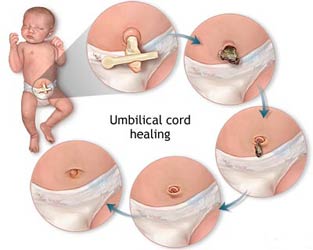Insure a safer life with Umbilical Cord Blood
 Insure a safer life with Umbilical Cord Blood
Insure a safer life with Umbilical Cord Blood
Cord Blood is the blood that remains in the umbilical cord immediately after the birth of a baby. The Umbilical cord blood which was previously discarded after birth has emerged as an alternative source of hematopoietic stem cells for hematological reconstitution, mainly for leukemia patients, as well as for some hematological deficiencies and bone marrow failures. In recent years, it has become increasingly clear that cord blood, as well as the surrounding tissue of the umbilical cord; contain additional stem cells which have been shown to be of great potential for regenerative medicine. The collection of cord blood is quick, painless and has no side effects on the mother or the baby. Cord blood is special because it is a rich source of stem cells.
These cord blood cells can be used for bone marrow transplant. Some parents have chosen to have this blood diverted from the baby's umbilical blood transfer through early cord clamping and cutting, to freeze for long-term and storage at a cord blood bank should the child ever require the cord blood stem cells (for example, to replace bone marrow destroyed when treating leukemia). This practice is somewhat controversial with critics asserting that early cord blood withdrawal actually increases the likelihood of childhood disease.
The Royal College of Obstetricians and Gynecologists 2006 opinion states, "There is still insufficient evidence to recommend directed commercial cord blood collection and stem-cell storage in low-risk families."
In the future, cord blood-derived embryonic-like stem cells (CBEs) may also be banked and matched with other patients, much like blood and transplanted tissues. The use of CBEs could potentially eliminate the ethical difficulties associated with embryonic stem cells
After delivery, the umbilical cord and placenta are no longer needed and are often discarded. But the blood remaining in the umbilical cord and placenta is rich with blood-forming cells. These healthy blood-forming cells can be collected and stored so they can be used by a patient who needs them.
Before your baby is born, the umbilical cord is a lifeline. After birth, that lifeline can provide hope to other patients suffering from life threatening diseases. Like bone marrow, cord blood is rich in the blood-forming cells that can be used in transplants for patients with leukemia, lymphoma. (These cells are not embryonic stem cells.) When a patient needs a transplant, his or her doctor will decide what the best source of blood-forming cells is.
Patient’s own cells (autologous): If the best choice is to use the patient’s own cells for transplant, the cells are usually collected from the patient’s blood stream before the transplant.
Donated cells (allogeneic): If the best choice is to use donated cells for transplant, the doctor will look for a donor or a cord blood unit with a tissue type that matches the patient’s as closely as possible. A patient’s best chance of finding a match is with a brother or sister. If a brother or sister is a match, the cells for transplant can be collected from that sibling’s bone marrow or peripheral blood or cord blood unit.
But 7 out of 10 people will have to look outside their family because there is not a suitably matched person within their family.
Your decision about what to do with your baby’s umbilical cord blood is a personal one. Today, expectant parents may choose from among the following options:
• Donate to a public cord blood bank. When you donate cord blood to a public bank, you are making it available to any patient in need of a transplant to treat a life-threatening disease. Learn more about donating cord blood.
• Store it in a private family cord blood bank. When you pay to store cord blood in a private family cord blood bank, it is saved for your family.
• Save it for a family member with a medical need. When a sibling or relative has a disease that may be treated with a bone marrow or cord blood transplant, parents can choose to save their baby’s cord blood for directed donation. Collecting and storing cord blood for directed donation is often offered at little or no cost through many public and family cord blood banks, if it is medically indicated.
• Donate it for research studies. Laboratories and technology companies conduct studies to help improve the transplant process for future patients. (This cord blood is not stored for transplant.) The collection process for research is free.
• Do nothing. You can choose to do nothing with the umbilical cord blood, and it will be discarded after birth.
If you are expecting a baby, talk to your health care provider about these options. Your decision could help change someone’s life.